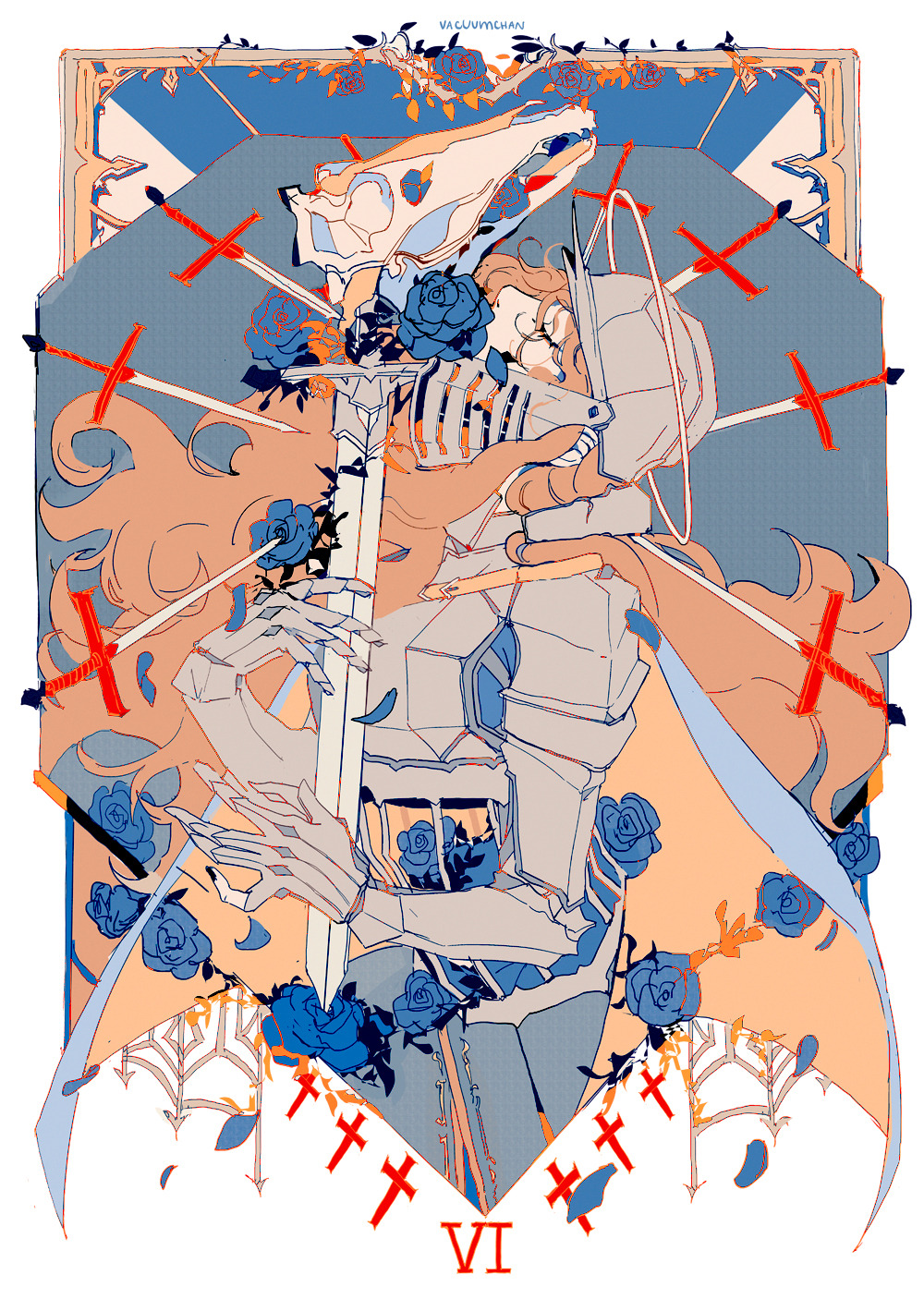
PART 1
The Devil (General Rules)
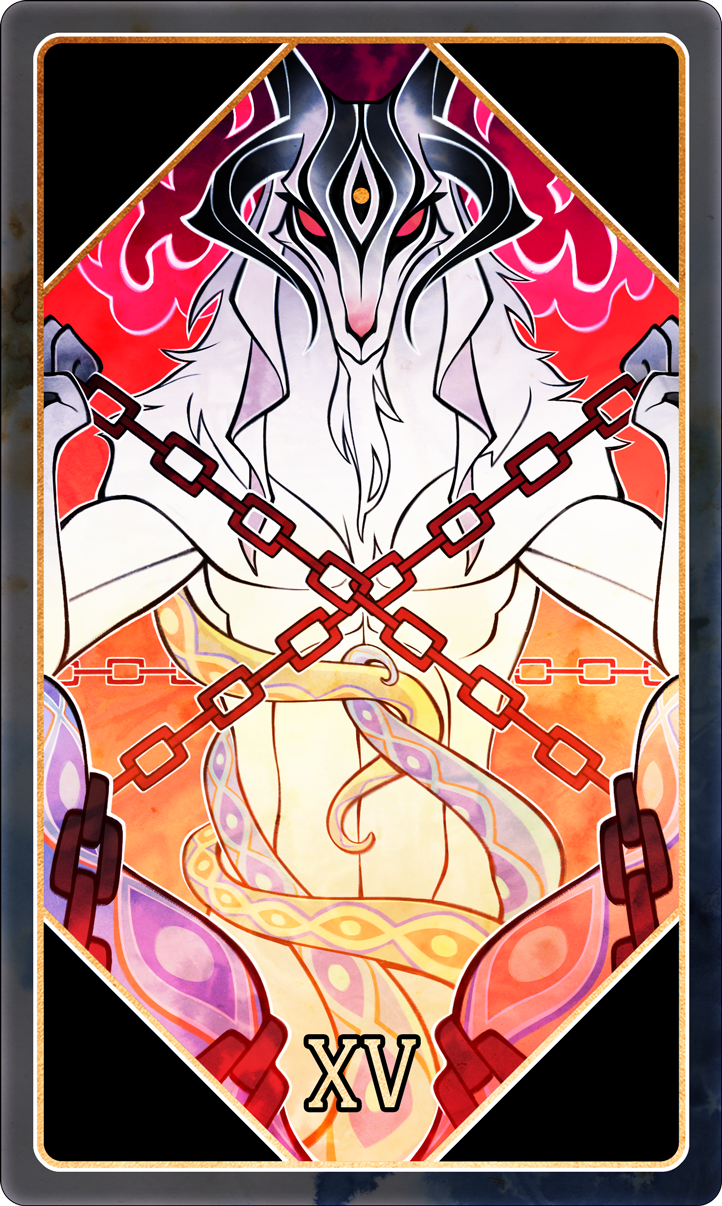
General Rules
-
Roll for health. If you roll below average, take average.
-
Characters start off with one free feat. Lucky is banned. Feats are revised, and are found here
-
Flanking has been modified, and no longer grants you advantage. Instead, it grants you a +2 bonus to attack rolls.
-
The following array is used for stats: 16, 15, 13, 12, 10, 8
-
You start at level 3
-
The Changeling and Dragonmarked Races are banned.
-
Resurrections use Matthew Mercer's rules, which are here
-
When you're knocked down to unconsciousness multiple times in a day, you take 1 level of exhaustion for each time after the first before a long rest. Rules for removing it are as normal - Example:
You're knocked down once. Cool, you get healed, you're fine. You're knocked down again, an hour later. You take a level of exhaustion when you get back up.
-
You make Death Saving throws in secret - Only I know the result. You are not allowed to communicate what the result is to fellow players.
-
Milestone Experience
Taking Action
It's time to act. You want to charge across the rickety bridge? Climb the crumbling wall? Kick down the old door? Great, now make a roll to see if you succeed.
Help
If you take the Help action to grant advantage to an ally, you get to roll one of the two d20 during the attempt.
Your ally adds their normal bonuses as if they had rolled the die themselves.
GM: The owlbear screeches as the two of you surround it. Viridian, Krazak — what do you do?
Viridian: This guy looks pretty wild. I'll help distract the beast, Krazak, while you —
Krazak: Hit it with the axe?
Viridian: Hit it with the axe. Ok I'll make a feint to the left (rolls 18)...
Krazak: And I'll swing the axe to the right (rolls 6)...
GM: Thanks to Viridian's feint, Krazak's axe bites deep into the owlbear. Roll your damage, Krazak.
Teamwork
You can't roll multiple attempts for the same action — recalling a piece of knowledge, sweet-talking the castle guard, pushing a heavy boulder aside. But you can work together with your allies to make that one attempt as successful as possible.
Anyone with a relevant skill or background may help you attempt something — the first person grants you advantage (per the Help action), and every additional person grants you a +1 bonus. If the roll fails, however, everyone involved is liable for the consequences.
Degrees of Success
Sometimes, despite our best efforts, we don't always win. But not all failures are equal — sometimes we mess up a little, sometimes we mess up catastrophically. Sometimes, we even have a chance to prevent failure — at a small, extra cost.
This chapter introduces degrees of success, allowing you to judge the scale of success and failure accordingly.
Success & Failure
When you attempt an action that has a chance of failure, compare your result to the DC and check the list below to see just how well you did.
-
Critical Success: You succeeded by 10 or more on a skill check, or rolled a natural 20 on an attack. Things have gone perfectly. You achieve your goal and something else happens in your favor.
-
Success: You achieve your goal.
-
Minor Failure or Success at a Cost: You failed by 1, 2, or 3. You can choose to succeed, but something bad also happens as a consequence.
-
Failure: You failed by 4 or more. Something bad happens — you take damage, lose a hit die, a Condition worsens, etc.
-
Critical Failure: You failed by 10 or more on a skill check, or rolled a natural 1 on an attack. It's all gone badly for you and you suffer a second consequence in addition to the normal failure effects — you take extra damage, lose a hit die, drop an item, etc.

















Examples of Play
Here are two examples of using degrees of success—one to demonstrate Success at a Cost and how negotiation works, and another to show critical failure in action.
Chansi is trapped on a collapsing ledge over a dark abyss. Luckily, her friends have thrown down a rope for her to climb to safety.
GM: The ground is crumbling beneath your feet, Chansi. There's a rope hanging ahead, over the abyss.
Chansi: I leap out and grab hold of it.
GM: Ok, that's a Strength check.
Chansi: I should be able to use Athletics for this, so that's... (rolls 14) augh, so close!
GM: Very close indeed, the rope barely slips past your fingers. You have a chance to Succeed at a Cost...
Chansi: Damn, I can't fall into the abyss. Perhaps... something falls out of my bag as I grab hold? Those old mushrooms I picked up earlier maybe?
GM: It has to be something precious to you.
Chansi: Ah. Well I was really hoping to use this healing potion later...
GM: Perfect. For a moment you fall, barely catching the rope at the last second with your other hand. But as you hang, you hear a small rip from your bag and your healing potion tumbles into the abyss below.
Chansi: Augh, I really needed that potion...
Viridan has bluffed his way into a meeting with a local lord, hoping to convince the lord to lend his support to the defense of a nearby village.
GM: Lord Erasius looks at you coldly, Viridian. "And why should I trust you, stranger?"
Viridian: Hmm. I want to convince Erasius that I'm nobility with access to the king. If Erasius will support us, I can put in a few words to boost his reputation.
GM: Ok, that's a tricky lie. You haven't had time to prepare this, so it's an off-the-cuff bluff — make a Charisma check.
Viridian: Can I use History with this?
GM: Yes, you know enough about the local lands to throw around a few names.
Viridian: Great. That's... (rolls 13) not good.
GM: No, it isn't — it's a critical failure. Erasius can see right through your lies, and — as a second consequence — he's extremely offended. "You come into my home and dare lie right to my face? Perhaps some time in our dungeons will extract the truth from you. Guards!"
Viridian: Son of a...



Cheating Fate
Even in the face of certain death, some lucky adventurers manage to find a way to cheat fate and live to fight another day. Today is a good day to survive.
Fate Points
Fate allows your character to survive what would otherwise be certain death. If you would suffer a killing blow or fail your last death saving throw, you may spend a fate point to cheat death in some fashion.
Perhaps you were knocked unconscious, or the scorpion's poison wasn't strong enough to finish you off, or it was just a flesh wound? Discuss with your GM exactly how it is you managed to survive your ordeal.
GM: You lie unconscious and dying, Viridian, but the orc is without mercy—she stabs down with her spear. Lose a death saving throw.
Viridian: Oh no, that was my last one...
Chansi: You're dead? For real?
Viridian: Yea — or I would be if I didn't have one last fate point to use. Perhaps the spear missed me...?
GM: Fate is in your favor. The spear wouldn't miss given its proximity, but let's say it missed your vital organs. Everyone thinks you're dead, and you remain unconscious but alive for the rest of the scene.
Viridian: Unconscious and alive sounds good to me.
Fate points help to give your players a little more durability. New characters begin with one fate point, and may hold no more than three at one time.
Spending Fate
When you spend a fate point, you (usually) cannot act for the rest of the scene — everyone, friend and foe alike, thinks you're dead or otherwise not worth any attention. But you are immune to any further damage during the rest of the scene, regardless of whatever else happens around your unconscious body.
At the end of the scene — or whenever appropriate — you regain consciousness with 1 hit point.
Gaining Fate
Fate points are extremely rare. New characters start with one fate point — their reward for becoming an adventurer in the first place.
But beyond this, additional points can only be gained by facing — and defeating — the most dangerous monsters in your world. Dragons, liches, beholders — these fated monsters are significant threats to the party.
Fate smiles on those who brave the darkest of these optional dangers and survive.
GM: You hear that the black dragon Kaladax has laid waste to Merrowford and taken residence in the wreckage of the town.
Clanda: Is he a fated dragon?
GM: Kaladax is a major power, and certainly fated.
Viridian: Could be worth investigating — I don't like being fate-less now, myself...
A fated monster rewards only 1 fate point in total when defeated — the players must decide who among them is lucky enough to take it.


Changing Fate
Apart from the aforementioned options for spending Fate Points, here is another way to use them - When used, the rules for Fate Points apply, except the paragraph under "spending fate".
Twisting Fate
You can gain Fate Points by completing the act specified in the earlier section, or by: Roleplaying particularly well, doing an act of extreme good that makes sense, or doing something that's creative and pretty damn cool (without overtly breaking the rules)
Fate points
Fate Points can be spent in the following ways:
-
To gain advantage on a saving throw, skill check, or attack roll.
-
To turn a hit into a critical hit.
-
Gain 1 free use of an ability that requires a short rest to regain.
-
Impose disadvantage on an enemy save against one your spells or abilities.
-
Impose disadvantage on an enemy attack or ability check used against you.
Doom Points
Doom Points are points that, I, as the DM gain whenever you, the players do one of the following: Are defeated by an enemy of sufficient power, commit an evil act, or perform an act that is way outside of the rules (also known as anime bullshit). I can use these points do many things - Including doing the referred to "anime bullshit".
Disclaimer. I will never use these points to drain the fun out of the game. I will also use them sparingly. I will never TRY to earn these points - Doing the anime bullshit is encouraged, but doing so allows me to do some cool things with the enemies as well. I've found that it spices up combat for everyone involved, in a positive way.
Potions
Magic permeates the world — it's in the air you breathe, the food you eat, and the liquids you drink. Through carefully preparation, this magic can be harnessed to create powerful consumables that help — or hinder — your adventures.
Magical Potions
A potion is a magically-infused liquid that, when consumed, can bestow an effect on your character — restoring health, damage resistance, strength, etc.
Potions can vary greatly in appearance, texture, and taste depending on their recipe and maker — roll on the tables below to randomly generate your potion details.
Potion Description
| d12 | Texture | Color | Taste/Smell |
|---|---|---|---|
| 1 | Thin | Blue | Citrus |
| 2 | Thick | Red | Sweet |
| 3 | Bubbly | Yellow | Sour |
| 4 | Fizzy | Silver | Bitter |
| 5 | Jelly | Gold | Salty |
| 6 | Chunky | Purple | Savory |
| 7 | Watery | Orange | Spicy |
| 8 | Oily | Green | Foul |
| 9 | Slimy | Brown | Delicious |
| 10 | Crunchy | Black | Sickening |
| 11 | Chewy | White | Tangy |
| 12 | Moving | Teal | Familiar |
Drinking a Potion
Drinking a potion requires you to spend a bonus action. Alternatively, to feed a potion to someone else, you must spend an action. You must have at least one free hand to perform either of these actions.
Identifying Potions
Not all magic potions look alike—even a simple healing potion can vary wildly in appearance depending on who made it and which recipe was used.
During a short rest, you can attempt to identify any unidentified potions by making an Arcana knowledge check with an alchemist's kit—one per potion. Base the DC against each potion's rarity.
Success: You learn the true name of the potion.
Fail: You know if the potion is at least safe to drink.
Critical Fail (10 or more): You (unknowingly) learn a false or misleading name of the potion.
POTION IDENTIFICATION DC
| Rarity | DC |
|---|---|
| Common | 100gp |
| Uncommon | 200gp |
| Rare | 300gp |
| Very rare | 400gp |
| Legendary | 500gp |
While exploring the Nightglade, Chansi finds an unidentified potion — which the GM knows to be a rare Potion of Heroism. During the next short rest, she attempts to identify it with her alchemist's kit — rolling 13 against a secret DC of 20.
She isn't able to discover exactly what the potion is, but she at least learns that it's safe to drink.
Identify Spells
You can learn the true name of any potion using the Identify spell (or similar magics).
Consumables
Healing potions are an adventurer's best friend, bringing many a hero back from certain death.
When you drink a healing potion, don't roll a d4—instead, roll the same die as your most common hit die. If you don't have a hit die value for any reason, roll a d4.
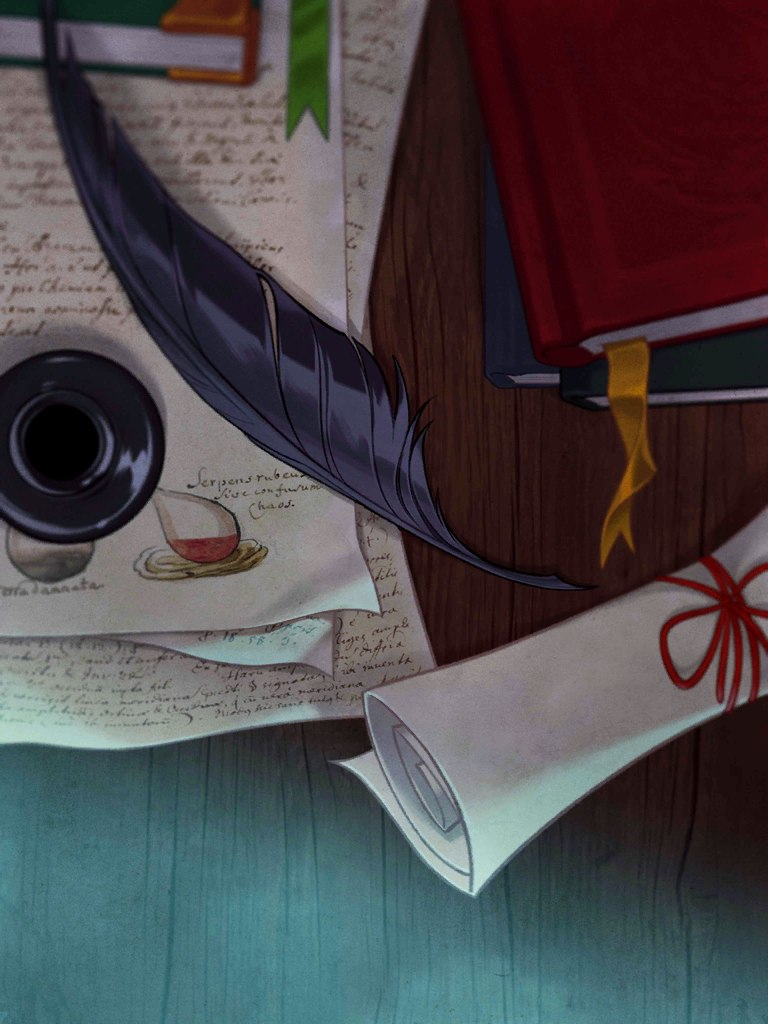


POTION OF HEALING
Item, Potion, Consumable
This red potion feels strangely warm to the touch. It tastes of cinnamon and orange.
When you drink this potion, you instantly recover some hit points without needing to spend any hit dice — the better the quality, the more hit points you are able to restore.
| Type | Rarity | Recovery | Cost |
|---|---|---|---|
| Lesser | Common | 2 [hit die] + 2 | 50 gp |
| Greater | Uncommon | 4 [hit die] + 4 | 150 gp |
| Superior | Rare | 6 [hit die] + 8 | 450 gp |
| Supreme | Very Rare | 8 [hit die] + 16 | 1,350 gp |
Krazak, a barbarian, drinks a lesser healing potion with his bonus action. Using his hit die value (d12), he rolls 2d12 + 4 to see how many hit points he recovers.
Multiclassed Characters
If you are multiclassed and have hit dice of varying sizes, use the hit die value of whichever class you have the most levels in. On a tie, choose the highest.
Flasks
Potions are an adventurer's best friend, but it's not always sensible — or realistic — to carry a few dozen potions at once. When you need to carry a lot of potion in a little container, use a flask.
Magical Flasks
A flask is a small, magically-infused bottle (or other container) that can safely hold a large — but uncertain — amount of consumable potion (or other liquid).
Unlike potions, which typically come in single-use vials, it's always hard to tell exactly how much liquid remains inside a flask — you never quite know how many uses you'll get before it's all gone.
Flask Appearance
| d12 | Material | Color | Style/Design |
|---|---|---|---|
| 1 | Fragile Glass | Blue | Human |
| 2 | Reinforced Glass | Red | Dwarven |
| 3 | Wood | Yellow | Elven |
| 4 | Porcelain | Silver | Orcish |
| 5 | Bone | Gold | Draconic |
| 6 | Clay | Purple | Undead |
| 7 | Leather | Orange | Celestial |
| 8 | Stone | Green | Aberrant |
| 9 | Resin | Brown | Elemental |
| 10 | Metal | Black | Fiendish |
| 11 | Dragonscale | White | Gnomish |
| 12 | Plant | Teal | Monstrous |
The Flask Die
Instead of tracking individual drinks, flask quantity is measured with a die—d8, d10, d12, etc. This is your Flask die — roll it whenever you take a drink from the flask: if you roll a 1 or 2, the die gets one size smaller:
If you roll a 1 or 2 on a d4, that's it — the flask is now completely empty until you can find a way to refill it.
Flask Die
| d20 | → | d12 | → | d10 | → | d8 | → | d6 | → | d4 | → | 0 |
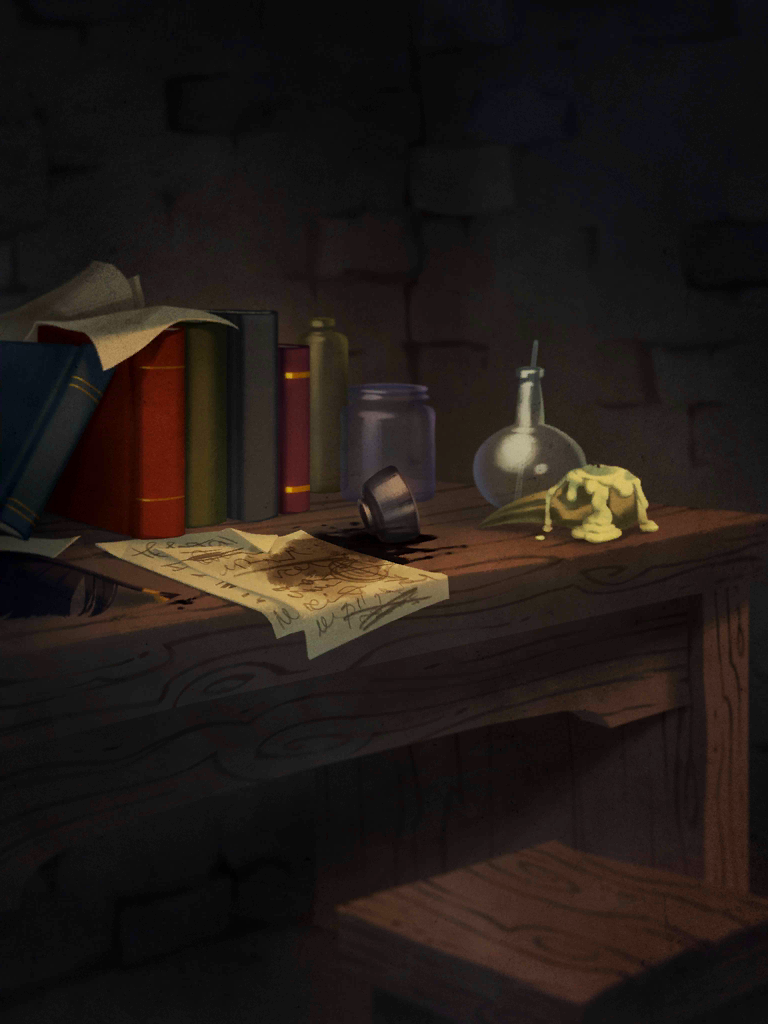


GM: The wizard's lightning bolt hits you for 11 points of damage, Clanda. What do you do?
Clanda: Damn it, I'm bloodied. Can't risk another hit like that—I'll take a drink from my flask of healing as a bonus action and get... 7 hit points back.
GM: Great, now roll your flask die.
Clanda: Flask quantity is d4, so I roll a d4 and get... (rolls 1) ...damn — looks like that was the last of it.
Average Uses & Costs
| Flask Die |
Remaining Uses (Average) |
Cost to Buy |
|---|---|---|
| 1 | 30 | 22 x base potion cost |
| 2 | 20 | 15 x base potion cost |
| 3 | 14 | 10 x base potion cost |
| 4 | 9 | 6 x base potion cost |
| 5 | 5 | 3 x base potion cost |
| 6 | 2 | 1 x base potion cost |
Splitting the Flask
Magic fades quickly from any liquid leaving the flask. If you pour the contents of a flask into another container — such as a potion vial, a cup, or a different flask — the magic fades within one round, becoming useless if not consumed during that time.



PART 2
The Magician (Spellcasting)
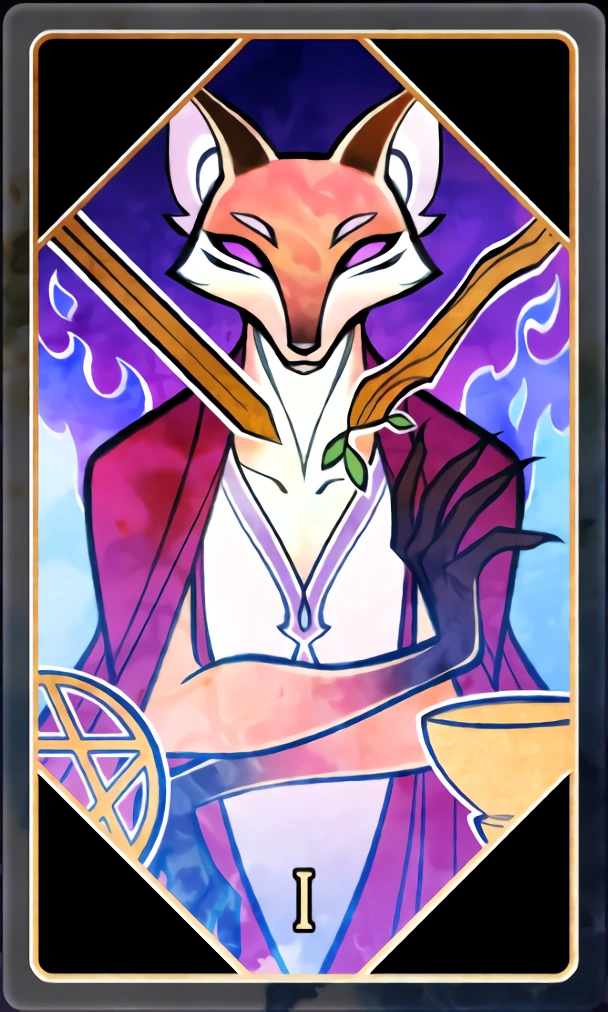
Spellcasting
Perceiving a Caster at Work
Many spells create obvious effects: explosions of fire, walls of ice, teleportation, and the like. Other spells, such as charm person, display no visible, audible, or otherwise perceptible sign of their effects, and could easily go unnoticed by someone unaffected by them. As noted in the Player's Handbook, you normally don't know that a spell has been cast unless the spell produces a noticeable effect.
But what about the act of casting a spell? Is it possible for someone to perceive that a spell is being cast in their presence? To be perceptible, the casting of a spell must involve a verbal, somatic, or material component. The form of a material component doesn't matter for the purposes of perception, whether it's an object specified in the spell's description, a component pouch, or a spellcasting focus.
If the need for a spell's components has been removed by a special ability, such as the sorcerer's Subtle Spell feature or the Innate Spellcasting trait possessed by many creatures, the casting of the spell is imperceptible. If an imperceptible casting produces a perceptible effect, it's normally impossible to determine who cast the spell in the absence of other evidence.
Identifying a Spell
Sometimes a character wants to identify a spell that someone else is casting or that was already cast. To do so, a character can use their reaction to identify a spell as it's being cast, or they can use an action on their turn to identify a spell by its effect after it is cast.
If the character perceived the casting, the spell's effect, or both, the character can make an Intelligence (Arcana) check with their reaction or action. The DC equals 15 + the spell's level. If the spell is cast as a class spell and the character is a member of that class, the check is made with advantage. For example, if the spellcaster casts a spell as a cleric, another cleric has advantage on the check to identify the spell. Some spells aren't associated with any class when they're cast, such as when a monster uses its Innate Spellcasting trait.
This Intelligence (Arcana) check represents the fact that identifying a spell requires a quick mind and familiarity with the theory and practice of casting. This is true even for a character whose spellcasting ability is Wisdom or Charisma. Being able to cast spells doesn't by itself make you adept at deducing exactly what others are doing when they cast their spells.
Invalid Spell Targets
A spell specifies what a caster can target with it: any type of creature, a creature of a certain type (humanoid or beast, for instance), an object, an area, the caster, or something else. But what happens if a spell targets something that isn't a valid target? For example, someone might cast charm person on a creature believed to be a humanoid, not knowing that the target is in fact a vampire. If this issue comes up, handle it using the following rule.
If you cast a spell on someone or something that can't be affected by the spell, nothing happens to that target, but if you used a spell slot to cast the spell, the slot is still expended. If the spell normally has no effect on a target that succeeds on a saving throw, the invalid target appears to have succeeded on its saving throw, even though it didn't attempt one (giving no hint that the creature is in fact an invalid target). Otherwise, you perceive that the spell did nothing to the target.
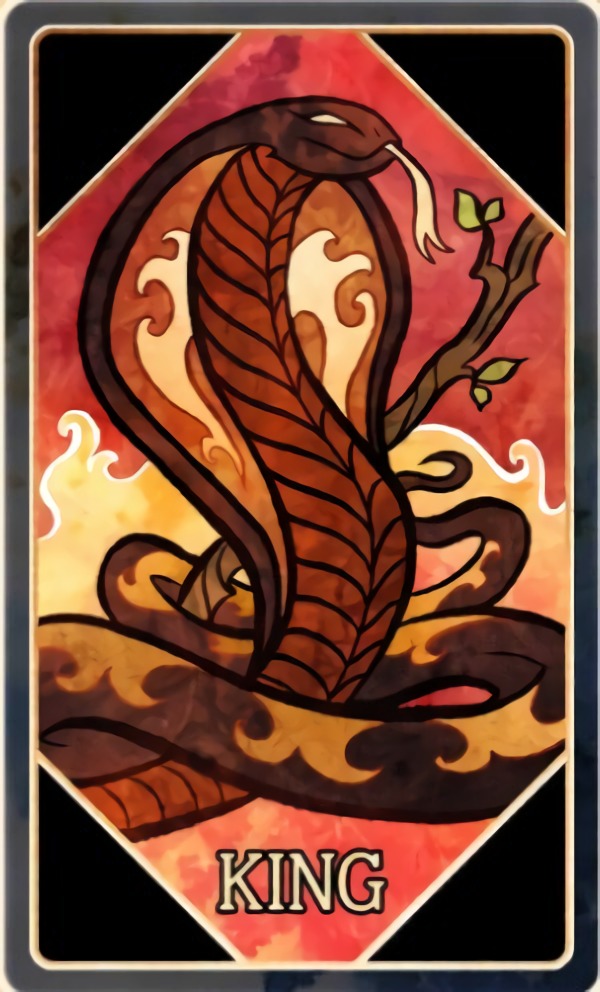


Casting a Spell
The following is an addendum to the passage under "Bonus Action", in the Casting Time section of Casting a Spell in the Player's Handbook, page 202. The change is indicated in bold
Bonus Action
A spell cast with a bonus action is especially swift. You must use a bonus action on your turn to cast the spell, provided that you haven't already taken a bonus action this turn. You can cast another spell during the same turn, but only if the combined level of both spells does not exceed the level of highest level spell slot.
Hiding Spellcasting
In some situations you may attempt to hide the act of casting spells, cast them in a non-threatening manner, or disguise the use of specific components as part of the spell casting.
If a spell has a Verbal component, you must roll Intelligence (Stealth) or Wisdom (Stealth) opposed by Passive Perception if you are not actively observed, or Perception Roll if observed. Loud background noise give advantage to the your roll. If the observer knows that you are able to use magic, they have advantage to the Perception Roll.
If a spell has a Somatic component, you must roll Dexterity (Stealth) opposed by Passive Perception if you are not actively observed, or Perception Roll if observed. Lots of nearby movement (such as a crowd) give advantage to your roll. If the observer knows you are able to use magic, they have advantage to the Perception Roll.
If a spell has a Material component, you must roll Dexterity (Sleight of Hand) opposed by Passive Perception if you are not actively observed, or Perception Roll if observed. If the observer is trained to recognize spell components, he has advantage to the Perception Roll.
If a spell has multiple components, you must roll separately for each. Failure to one roll reveals only suspicious activity unless the observer has studied magic. Failure to two or more rolls reveals unmistakable evidence of casting magic.
Spellcasting Services
Spell services generally available including healing and recovery spells, as well as information-gathering spells. Other spells services might be available as specified in adventure.
Spellcasting Services
| Spell | Cost | Location |
|---|---|---|
| Cure Wounds | 10 gp | Small Village |
| Identify | 20 gp | Medium Village |
| Lesser Restoration | 40 gp | Large Village |
| Prayer of Healing | 40 gp | Small Village |
| Ceremony | 50 gp | Small Village |
| Remove Curse | 90 gp | Small Village |
| Speak With Dead | 90 gp | Large Village |
| Divination | 250 gp | Large Village |
| Greater Restoration | 450 gp | Large Village |
| Raise Dead | 1,250 gp | Small Town |
| Teleportation Circle* | 2,500 gp | Large Town |
| Heal | 3,000 gp | Medium City |
| Regenerate | 3,000 gp | Large City |
| Resurrection | 7,500 gp | Large City |
| Mass Heal | 10,000 gp | Large City |
| Clone | 20,000 gp | Large City |
| True Resurrection | 50,000 gp | Large City |
Note on Teleportation Circle
Even if the town has someone to cast Teleportation Circle, they may not know the place they are teleporting to. In such cases, having the spell provider know of more popular places is a wise idea. For example, they might be able to teleport you to the capital of the kingdom you're in, or to a very popular location somewhere in the next kingdom.
Note on Prices
In some instances, players may not have to pay for the spell being cast, or they might gain a discount based on their actions or who they are. For example, the cleric of the party may be able to work a discount for the Regenerate spell if they worship the same god as the caster. Alternatively, if the spellcaster is in danger, and the players are there to make sure they survive, and a player is wounded or needs medical help, the spellcaster may just use a spell for free. At lower levels, players may have to go on quests to gain use of the spells instead of paying, or a whole campaign.
PART 3
Strength (Combat)
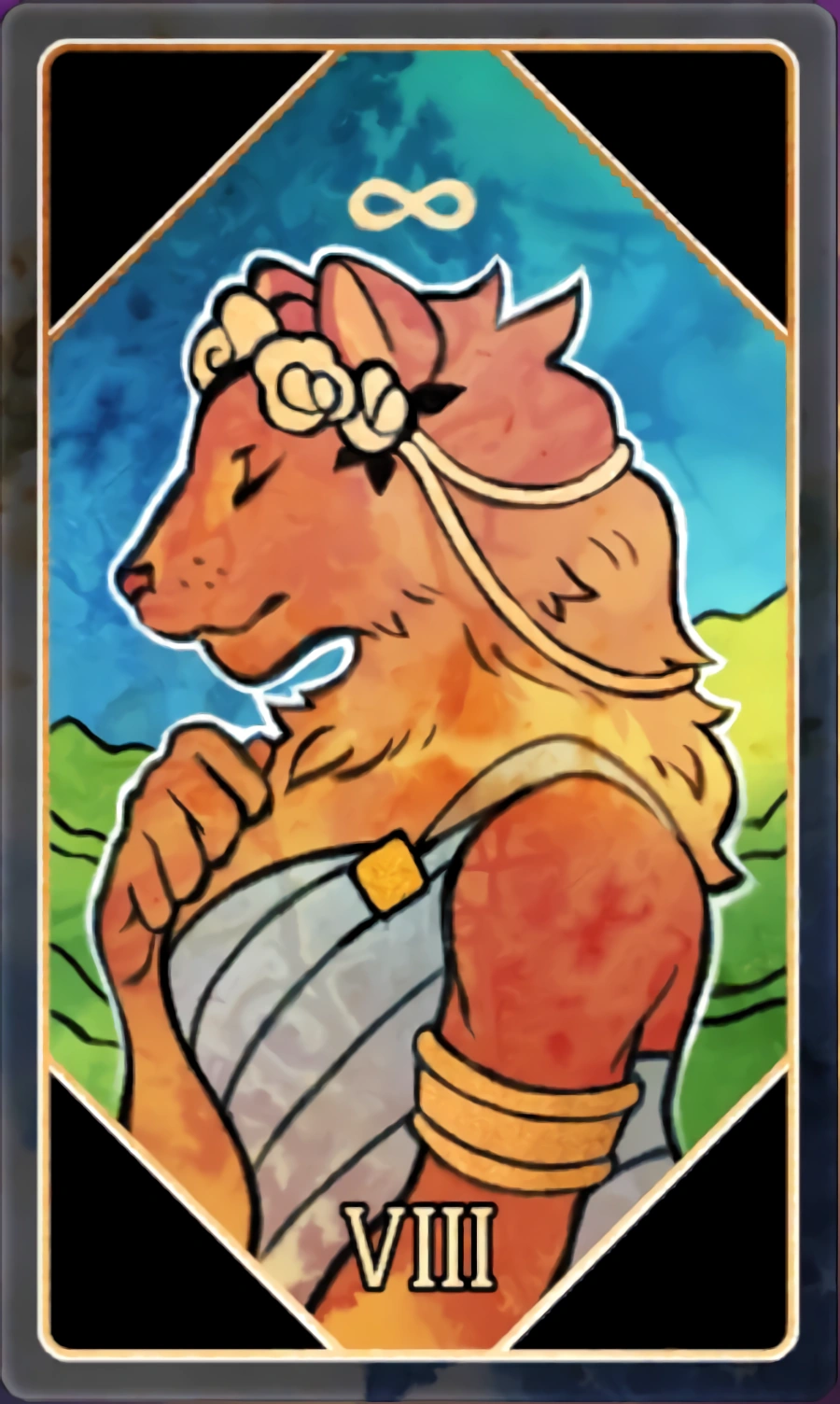
Combat Actions
In addition to the combat options given below, there is an additional system of maneuvers and abilities I have created, which apply to the following classes: Paladin, Ranger and Fighter. When using this ruleset, the Battlemaster Fighter Archetype is removed.
This ruleset can be provided on demand.
Climb onto a Bigger Creature
If one creature wants to jump onto another creature, it can do so by grappling. A small or Medium creature has little chance of making a successful grapple against a Huge or Gargantuan creature, however, unless magic has granted the grappler supernatural might.
As an alternative, a suitably large opponent can be treated as terrain for the purpose of jumping onto its back or clinging to a limb. After making any ability checks necessary to get into position and onto the larger creature, the smaller creature uses its action to make a Strength (Athletics) or Dexterity (Acrobatics) check contested by the target's Dexterity (Acrobatics) check. If it wins the contest, the smaller creature successfully moves into the target creature's space, the smaller creature moves with the target and has advantage on attack rolls against it.
The smaller creature can move around within the larger creature's space, treating the space as difficult terrain. The larger creature's ability to attack the smaller creature depends on the smaller creature's location, and is left to your discretion. The larger creature can dislodge the smaller creature as an action—knocking it off, scraping it against a wall, or grabbing and throwing it—by making a Strength (Athletics) check contested by the smaller creature's Strength (Athletics) or Dexterity (Acrobatics) check. The smaller creature chooses which ability to use.
Disarm
A creature can use a weapon attack to knock a weapon or another item from a target's grasp. The attacker makes an attack roll contested by the target's Strength (Athletics) check or Dexterity (Acrobatics) check. If the attacker wins the contest, the attack causes no damage or other ill effect, but the defender drops the item.
The attacker has disadvantage on its attack roll if the target is holding the item with two or more hands. The target has advantage on its ability check if it is larger than the attacking creature, or disadvantage if it is smaller.
Overrun
When a creature tries to move through a hostile creature's space, the mover can try to force its way through by overrunning the hostile creature. As an action or a bonus action, the mover makes a Strength (Athletics) check contested by the hostile creature's Strength (Athletics) check. The creature attempting the overrun has advantage on this check if it is larger than the hostile creature, or disadvantage if it is smaller. If the mover wins the contest, it can move through the hostile creature's space once this turn.
Shove Aside
With this option, a creature uses the special shove attack from the Player's Handbook to force a target to the side, rather than away. The attacker has disadvantage on its Strength (Athletics) check when it does so. If that check is successful, the attacker moves the target 5 feet to a different space within its reach.
Tumble
A creature can try to tumble through a hostile creature's space, ducking and weaving past the opponent. As an action or a bonus action, the tumbler makes a Dexterity (Acrobatics) check contested by the hostile creature's Dexterity (Acrobatics) check. If the tumbler wins the contest, it can move through the hostile creature's space once this turn.
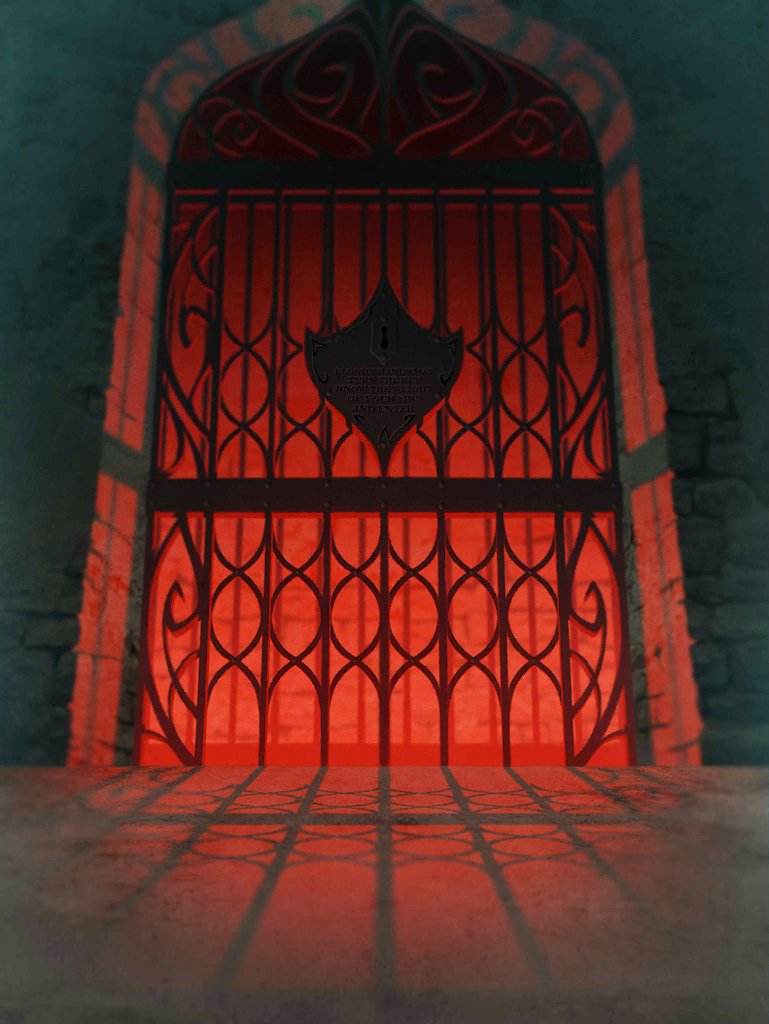


Optional Advanced
Combat Maneuvers
A weapon is more than the damage it deals. In combat, skilled warriors use their weapons to confuse, disorient, and disadvantage their enemies before moving in for the kill. Unless specified otherwise, any of the maneuvers in this document can be used by any character as long as they are wielding the appropriate weapon and are proficient with it. If a maneuver requires a creature to make a saving throw, the DC equals 8 + the attacker’s proficiency bonus + the attacker’s Strength or Dexterity modifier (attacker’s choice). Unless specified, these maneuvers have only their listed effect and don’t deal normal weapon damage.
Swords
Greatsword
Arcing Slash. When you attack with a greatsword, you may choose to target two creatures within your reach with a single attack. This attack uses the same attack roll for both targets and deals slashing damage equal to 1d6 plus your Strength modifier to each target.
Grinding Halt. Whenever you must make a Strength saving throw to avoid being moved against your will, you can dig the blade of your greatsword into the ground as a reaction. Roll 2d6 and add the number rolled to the saving throw. If the effect pushing you does not have a saving throw, you move 5 feet fewer.
Longsword
Lock Blades. When a creature attacks you with a weapon, you may use your reaction to attempt to lock blades and parry their attack. Make an attack roll with your longsword. You have advantage on this roll if you are wielding your longsword with two hands. If the result of this roll equals or exceeds their attack roll, their attack misses.
Short Draw. As an attack, you may draw a sheathed one-handed sword and make an attack roll to strike the enemy with its pommel, leaving the target gasping for breath. This attack deals no damage, but the next attack roll made against the target has advantage. You must have at least one hand free to take this action.
Rapier
Main Gauche. While wielding both a rapier and a dagger, you may use a reaction after being attacked to roll a d4 and add the result to your Armor Class until the end of the attacker’s turn.
Lock Blades. When a creature attacks you with a weapon, you may use your reaction to make an attack roll with your rapier. If the result of this roll equals or exceeds their attack roll, their attack misses.
Scimitar
Bloody Wound. When you hit a living creature with a scimitar, you can choose to make a superficial but bloody wound. The attack deals no damage, but the target takes 1d6 slashing damage at the beginning of each of its turns until it makes a DC 10 Wisdom (Medicine) check as an action to stop the bleeding or until it receives magical healing. A creature can have only one bloody wound at a time.
Short Draw. As an attack, you may draw a sheathed one-handed sword and make an attack roll to strike the enemy with its pommel, leaving the target gasping for breath. This attack deals no damage, but the next attack roll made against the target has advantage. You must have at least one hand free to take this action.
Shortsword
Close Quarters Combat. When you successfully grapple a creature or escape a grapple, you may make a single attack with a short sword as a bonus action. Additionally, whenever a creature fails to escape a grapple with you, you may make a single attack with a short sword as a reaction.
Short Draw. As an attack, you may draw a sheathed one-handed sword and make an attack roll to strike the enemy with its pommel, leaving the target gasping for breath. This attack deals no damage, but the next attack roll made against the target has advantage. You must have at least one hand free to take this action.
Polearms and Axes
Battleaxe
Crushing Blow. As an action, you can make a single attack roll with your battleaxe against an armored or naturally armored creature within 5 feet of you. If the attack hits, the target’s AC is permanently reduced by 1 until its armor is repaired, but cannot be reduced below 10 + the target’s Dexterity modifier. This attack has no effect on creatures with magical armor, unless your battleaxe is also magical.
Glaive
Disarming Parry. When a creature attacks you with a weapon, you may use your reaction to catch their weapon in your glaive’s hook and disarm them. Make an attack roll with your glaive. If the result of this roll equals or exceeds their attack roll, their attack misses and they must succeed on a Strength saving throw or drop their weapon.
Trip. As an attack while you are wielding a glaive, you may sweep your opponent’s legs in an attempt to trip them. Make an attack roll against a Large or smaller creature. If the attack hits, it must succeed on a Strength saving throw or fall prone.
Halberd
Rebuff. As an attack while you are wielding a halberd, you may use the haft of your weapon to rebuff up to two adjacent creatures. Make a single attack roll against one or two adjacent creatures within 5 feet of you. If the attack hits a target, you push it up to 10 feet away from you.
Trip. As an attack while you are wielding a halberd, you may sweep your opponent’s legs in an attempt to trip them. Make an attack roll against a Large or smaller creature. If the attack hits, it must succeed on a Strength saving throw or fall prone.
Lance
Charge. If you move at least 20 feet straight toward a creature before hitting it with a lance attack, the target takes an extra 1d12 piercing damage and must make a Strength saving throw. On a failure, the target falls prone.
Repel Charge. As an action, you can set your lance against a charge. If a creature moves at least 20 feet straight toward you and attacks you, you may use your reaction to make an attack with your lance. If this attack hits, it is an automatic critical hit and the target must make a Strength saving throw. On a failure, it falls prone and falls off its mount if it is mounted.
Pike
As it is a polearm, a pike-wielder always has access to the disarming parry and trip maneuvers (see “Glaive”).
Phalanx. If you are adjacent to at least two other pike-wielders, your pike attacks have advantage.
Repel Charge. As an action, you can set your pike against a charge. If a creature moves at least 20 feet straight toward you and attacks you, you may use your reaction to make an attack with your pike before the attacker. If this attack hits, it is an automatic critical hit and the target has disadvantage on its attack roll.
Quarterstaff
Vault. You can use your quarterstaff to help you leap long distances. You can use an action to double the length of your long jump, allowing you to leap a number of feet up to twice your Strength score (this jump is part of your movement). If you land adjacent to a creature at the end of this jump, you can make a single attack with your quarterstaff as part of this action.
Trident
Pin. As an action, make an attack roll against a Medium creature you are grappling. If the attack hits, you catch one of the target’s limbs between the tines and bury the trident in the ground, restraining the creature until the weapon is dislodged. The target may make a Strength or Dexterity saving throw (their choice) at the end of each of their turns to escape.
Disarming Parry. When a creature attacks you with a weapon, you may use your reaction to catch their weapon in your trident’s tines and disarm them. Make an attack roll with your trident. If the result of this roll equals or exceeds their attack roll, their attack misses and they must succeed on a Strength saving throw or drop their weapon.
Hammers and Blugeons
Club
Improvised Clobber. If you are using an improvised weapon that counts as a club, you may choose to strike with such force that your weapon breaks. As an action, make a single club attack. On a hit, this attack is an automatic critical hit and your improvised club breaks.
Blackjack. Make a single attack roll with your club against a humanoid target. If the attack hits, it does no damage, but the target must make a Constitution saving throw or be stunned until the beginning of its next turn.
Flail
Chain Garrote. While wielding a flail, you may attempt to grapple a creature by looping the chain of your flail around its neck. While grappled in this way, the 5 creature cannot speak, cannot breathe, and has disadvantage on attack rolls against you. If you surprised the creature with this grapple, it cannot hold its breath and immediately begins suffocating. Creatures that you cannot grapple or do not need to breathe are unaffected by this maneuver.
Shield Snare. As an action while wielding a flail, you may make a single attack roll against a target carrying a shield or a similar defensive tool. This attack ignores any bonus to AC granted by the shield and deals normal weapon damage. If the attack hits, the target must also make a Strength saving throw. On a failure, its shield is pulled from its grip and lands at its feet.
Greatclub
Hurling Impact. As an action, you can make a single attack roll with your greatclub against a Medium or smaller target. If the attack hits, it does normal weapon damage and the target must make a Strength saving throw. On a failure, the target is pushed up to 5 feet away from you. On a critical hit, this attack does 2d8 extra damage and the greatclub breaks.
Ribshatter. Make a single attack roll with your greatclub against a humanoid target. This attack does normal weapon damage and the target must make a Constitution saving throw. On a failure, it is stunned until the beginning of its next turn. If the damage you dealt was greater than the creature’s maximum hit dice, it is stunned until the end of its next turn.
Mace and Morningstar
Bruising Blow. As an action, make a single attack roll with your mace or morningstar against a living creature. If the attack hits, it deals normal weapon damage and the target must make a Constitution saving throw. On a failure, the target does not add its Dexterity modifier to its AC until the end of your next turn or until it is treated with a DC 10 Wisdom (Medicine) check.
Ribshatter. Make a single attack roll with your mace or morningstar against a humanoid target. This attack does normal weapon damage and the target must make a Constitution saving throw. On a failure, it is stunned until the beginning of its next turn. If the damage you dealt was greater than the creature’s maximum hit dice, it is stunned until the end of its next turn.
Maul
Crushing Blow. As an action, you can make a single attack roll with your maul against an armored or naturally armored creature. If the attack hits, the target’s AC is permanently reduced by 1 until its armor is repaired, but it cannot be reduced below 10 + the target’s Dexterity modifier. This attack has no effect on creatures with magical armor unless your maul is also magical.
Hurling Impact. As an action, you can make a single attack roll with your maul against a Medium or smaller target. If the attack hits, it does normal weapon damage, and the target must make a Strength saving throw. On a failure, the target is pushed up to 15 feet away from you.
War Pick
Piercing Point. As an action, you may pinpoint a weak point of an opponent’s armor and make a single attack with your war pick against it. This attack pierces armor, treating the target’s AC as 10 + their Dexterity modifier. On a hit, this attack does normal weapon damage.
Trip. As an attack while you are wielding a war pick, you may hook your opponent’s leg in an attempt to trip them. Make an attack roll against a Medium or Small creature. If the attack hits, it must succeed on a Strength saving throw or fall prone.
Warhammer
Bruising Blow. As an action, make a single attack roll with your warhammer against a living creature. If the attack hits, it deals normal weapon damage, and the target must make a Constitution saving throw. On a failure, the target does not add its Dexterity modifier to its AC until the end of your next turn or until it is treated with a DC 10 Wisdom (Medicine) check.
Sundering Strike. As an attack, make an attack roll with your warhammer against a creature wielding a weapon, including natural weapons. If the attack hits, the weapon is damaged, and all attacks made with this weapon have disadvantage. Another sundering strike destroys the weapon. This attack has no effect on magical weapons unless your warhammer is also magical. The rarity of your warhammer must match or be greater than the weapon you attempt to sunder.
Whip
Bullwhip. As part of your attack action, make a whip attack against a beast or a creature with an Intelligence score of 2 or lower. The target must make a Wisdom saving throw or be frightened of you until the end of its next turn.
Snare. As part of your attack action, you may snap your whip around a creature or its weapon. If you target the 6 weapon, the creature must make a Strength saving throw or drop its weapon at its feet. If you target the creature, it must make a Strength saving throw or be restrained. It may repeat this saving throw at the end of each of its turns. You cannot make whip attacks until the restrained condition is ended.
Thrown Weapons
Dagger
Pinning Point. When you make a melee or ranged weapon attack with a dagger, you may attempt to pin a Large or smaller creature to a wall or surface by catching their clothing with the knife’s point. This maneuver can be used against creatures without clothing at the GM’s discretion. Make an attack roll; if the attack hits, the target must make a Strength saving throw. On a failure, the target’s speed is reduced to zero until the dagger is removed. The target can make another Strength saving throw as an action on its turn.
Concealed Blade. Instead of making a Dexterity (Stealth) check to hide yourself, you may make a Dexterity (Sleight of Hand) check — contested by an active or passive Wisdom (Perception) check — to conceal your dagger. As an action, you may make a weapon attack with a concealed dagger against a creature that has not yet acted in combat. This attack has advantage.
Handaxe
Pinning Edge. When you make a melee or ranged weapon attack with a hand axe, you may attempt to pin a Large or smaller creature to a wall or surface by catching their clothing with the axe’s edge. This maneuver can be used against creatures without clothing at the GM’s discretion. Make an attack roll; if the attack hits, the target must make a Strength saving throw. On a failure, the target’s speed is reduced to zero until the axe is removed. The target can make another Strength saving throw as an action on its turn.
Javelin
Fearsome Accuracy. As an attack, you may throw your javelin at a creature at the very limit of your range. Make an attack roll against a creature exactly 120 feet away. If the attack hits, the creature takes normal damage and must make a Wisdom saving throw. On a failure, the creature becomes frightened of you for 1 minute.
Trip. As a melee weapon attack while you are wielding a javelin, you may sweep your opponent’s legs in an attempt to trip them. Make an attack roll against a Large or smaller creature. If the attack hits, it must succeed on a Strength saving throw or fall prone.
Light Hammer
Dazing Blow. As an action, you may make a single ranged weapon attack with a light hammer. If the attack hits, the target must make a Constitution saving throw or be incapacitated until the end of its next turn.
Sunder Joints. When you make a melee weapon attack against a creature in medium or heavy armor with a light hammer, you may choose to damage the joints of their armor instead of dealing damage to the creature. If the attack hits, the creature’s movement is reduced by 10 feet until the end of their next turn. This reduction is not cumulative.
Net
Nets have the unique property, Ensnaring, described below.
Ensnaring: A Large or smaller creature hit by a net is restrained until it is freed. A net has no effect on creatures that are formless, or creatures that are Huge or larger. A creature can use its action to make a DC 10 Strength check, freeing itself or another creature within its reach on a success. Dealing 5 slashing damage to the net (AC 10) also frees the creature without harming it, ending the effect and destroying the net.
Blinding Binds. Instead of restraining your foe, you may instead wrap the thick cords of your net around a single creature’s head. A Large or smaller creature hit by a net when you use this maneuver is blinded but is not restrained, until the net is removed.
Wing-Wrapping Net. Instead of restraining a flying creature, you may entangle its wings in your net. A Huge or smaller winged creature hit by a net when you use this maneuver has its fly speed reduced to 0 (but is not restrained) until the net is removed.
Ranged Weapons
Heavy Crossbow and Light Crossbow
In campaign settings with firearms, these maneuvers can also be used by a character who wields a rifle.
Shrapnel Shot. As an action, make a single attack with your crossbow against an unattended object. The attack deals double damage to the target. If the object is destroyed, it explodes into a cloud of shrapnel. Choose one of the following options:
- Creatures within 5 feet of the object must make a Dexterity saving throw, taking 1d6 piercing damage on a failure.
- A creature adjacent to the object must make a Constitution saving throw. On a failure, the creature is blinded until the beginning of your next turn.
Patient Shot. You carefully align your crossbow’s sights over your target. As an action in a turn that you have not moved, you may make a single crossbow attack with advantage.
Hand Crossbow
In campaign settings with firearms, these maneuvers can also be used by a character who wields a pistol. ____ Concealed Sidearm. Instead of making a Dexterity (Stealth) check to hide yourself, you may make a Dexterity (Sleight of Hand) check — contested by an active or passive Wisdom (Perception) check — to conceal your hand crossbow. As an action, you may make a weapon attack with a concealed crossbow against a creature that has not yet acted in combat. This attack has advantage.
Rapid Shot. You rapidly reload your hand crossbow, throwing off your aim but allowing you to make an additional attack this turn. As a bonus action, you may reload your hand crossbow and make an attack with it against a target within 30 feet. This attack has disadvantage.
Longbow and Shortbow
Pinning Shot. When you make an attack with a bow, you may attempt to pin a Large or smaller creature to a wall or surface by catching their clothing with the arrow’s point. This maneuver can be used against creatures without clothing at the GM’s discretion. Make an attack roll; if the attack hits, the target must make a Strength saving throw. On a failure, the target’s speed is reduced to 0 until the arrow is removed. The target can make another Strength saving throw as an action on its turn.
Distracting Shot. As an action, make a single attack with your bow. You intentionally miss your target but give an ally the chance to attack while it is distracted. The next attack roll against the target has advantage if it is made before the beginning of the target’s next turn. Trick Shot. As an action, make a single stylish bow attack with disadvantage. If the lower roll would also hit the target, you automatically score a critical hit.



PART 4
The Wheel of Fortune (Races)
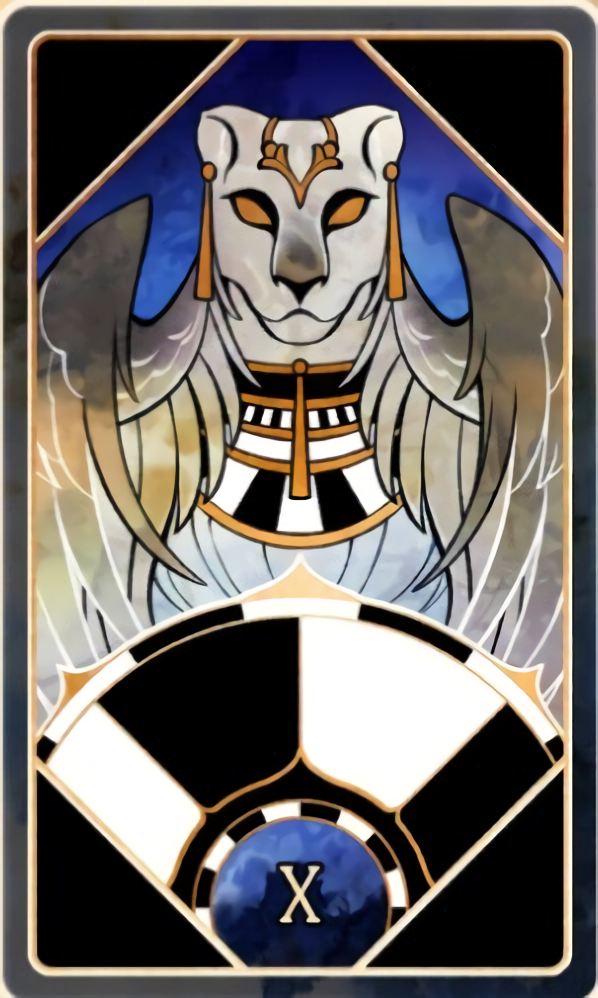
Lineage
At 1st level, you choose various aspects of your character, including ability scores, race, class, and background. Together these elements help paint a picture of your character’s origin and give you the ability to create many different types of characters. Despite that versatility, a typical character race in D&D includes little or no choice — a lack that can make it difficult to realize certain character concepts. The following subsections address that lack by adding choice to your character’s race, allowing you to customize your ability scores, languages, and certain proficiencies to fit the origin you have in mind for your character. Character race in the game represents your character’s fantasy species, combined with certain cultural assumptions. The following options step outside those assumptions to pave the way for truly unique characters.
Ability Score Increases
Whatever D&D race you choose for your character, you get a trait called Ability Score Increase. This increase reflects an archetypal bit of excellence in the adventurers of this kind in D&D’s past. For example, if you’re a dwarf, your Constitution increases by 2, because dwarf heroes in D&D are often exceptionally tough. This increase doesn’t apply to every dwarf, just to dwarf adventurers, and it exists to reinforce an archetype. That reinforcement is appropriate if you want to lean into the archetype, but it’s unhelpful if your character doesn’t conform to the archetype. If you’d like your character to follow their own path, you may ignore your Ability Score Increase trait and assign ability score increases tailored to your character. Here’s how to do it: take any ability score increase you gain in your race or subrace and apply it to an ability score of your choice. If you gain more than one increase, you can’t apply those increases to the same ability score, and you can’t increase a score above 20. For example, if the Ability Score Increase trait of your race or subrace increases your Constitution by 2 and your Wisdom by 1, you could instead increase your Intelligence by 2 and your Charisma by 1.
There are few exceptions to this houserule for races and subraces that are highly impacted by their ability score increases. These are:
Human: The variant human presented in the Player’s Handbook is the default example of the human race while using this house rule.
Mountain Dwarf: The Mountain Dwarf's +2 to STR is replaced with a +1 to STR.
Kobold: Kobolds lose -2 to STR, the Sunlight Sensitivity feature, and the Pack Tactics feature, which is replaced with Fury of the Small.
Half-Elf: Since half elves gain more ability score increases than most other races, they gain a new trait in its place. With this house rule, the SCAG variants for Half-Elves are banned:
Elven Heritage. You possess one of the following traits:
-
Drow Descent. You choose the drow's Drow Magic, Drow Weapon Training, or an additional 30 feet of darkvision.
-
Eladrin Descent. Once per long rest, you can teleport up to 10 feet as a bonus action, or you gain one of the following cantrips: Produce Flame, Chill Touch, Friends, or Ray of Frost. You can change which cantrip you know at the end of a long rest. Charisma is your spellcasting ability for that cantrip.
-
High Elf Descent. You can choose the High Elf's Elf Weapon Training or Cantrip.
-
Shadar-Kai Descent. Once per long rest, you can teleport up to 10 feet as a bonus action, or you gain resistance to necrotic damage.
-
Sea Elf Descent. You choose the Sea Elf's Sea Elf Training, Friend of the Sea, or you gain the Child of the Sea trait.
-
Wood Elf Descent. You choose the Wood Elf's Elf Weapon Training, Fleet of Foot, or Mask of the Wild.
Languages
Your character’s race includes languages that your character is assumed to know, usually Common and the language of your ancestors. For example, a halfling adventurer is assumed to know Common and Halfling. Here’s the thing: D&D adventurers are extraordinary, and your character might have grown up speaking languages different from the ones in your Languages trait. To customize the languages you know, you may replace each language in your Languages trait with a language from the following list: Abyssal, Celestial, Common, Deep Speech, Draconic, Dwarvish, Elvish, Giant, Gnomish, Goblin, Halfling, Infernal, Orc, Primordial, Sylvan, or Undercommon. Your DM may add or remove languages from that list, depending on what languages are appropriate for your campaign.
Proficiencies
Some races and subraces grant skill, weapon, or tool proficiencies. These proficiencies are usually cultural, but your character might not have any connection to the culture in question or might have pursued different training. You can replace each of those proficiencies with a different one, as shown on the Proficiency Swaps table.
Proficiency
| Proficiency | Replacement Proficiency |
|---|---|
| Skill | Skill |
| Simple weapon | Simple weapon or tool |
| Martial weapon | Simple/martial weapon or tool |
| Tool | Tool or simple weapon |
For example, high elf adventurers have proficiency with longswords, which are martial weapons. Consulting the Proficiency Swaps table, we see that your high elf can swap that proficiency for proficiency with another weapon or a tool. Your elf might be a musician, who chooses proficiency with a musical instrument—a type of tool—instead of with longswords. Similarly, elves start with proficiency in the Perception skill. Your elf might not have the keen senses associated with your kin and could take proficiency in a different skill, such as Performance. The “Equipment” chapter of the PHB includes weapons and tools suitable for these swaps, and your DM might allow additional options.
Racial Revisions
Race is a core part of your character's identity. These racial features have been amended for balance, and to better facilitate fun.
Dragonborn
Breath Weapon: You may use your breath weapon as a bonus action instead of a full action. Alternatively, if you can attack multiple times during the Attack action, you may use your breath weapon as one of these attacks.
You can use your Breath Weapon feature a number of times equal to your Constitution modifier.
Halfling
Lucky: After you use Lucky, you can't use it again until you complete a short or long rest or you roll a natural 20 on an attack roll, ability check, or saving throw.
Lizardfolk
Hungry Jaws: Replace your existing Hungry Jaws ability with the following trait.
Hungry Jaws
Race (Lizardfolk), Trait
As a bonus action, or as one attack during an Attack action, you can make a bite attack against an adjacent target. If the attack hits, it deals 1d6 + STR damage. If the target is a living, blooded creature, you also gain temporary hit points equal to the damage dealt. The damage increases to 2d6 + STR at 6th level, 3d6 + STR at 11th level, and 4d6 + STR at 16th level.
After you use Hungry Jaws, you can't use it again until you complete a short or long rest.
Satyr
Satyr's lose the Magic Resistance trait.
Yuan-Ti Pureblood
Yuan-Ti Pureblood's lose the Magic Resistance trait, and have resistance to poison damage instead of immunity. They retain their immunity to the poisoned condition.
Elves
Non Eladrin and Shadar-Kai elves and Half-Elves lose the Fey Ancestry Trait, and instead gain the Vengeful Assault trait.
Vengeful Assault. When you take damage from a creature in range of a weapon you are wielding, you can use your reaction to make an attack with the weapon against that creature. Once you use this trait, you can't do so again until you finish a short or long rest.
Class Changes
The following Class reworks are available for use.
The Blood Hunter
The Fighter
The Ranger
The Sorcerer
The Spellblade
The Warlock
The Witch
Specific Class feature
revisions and additions
The following class features have been revised and changed, meaning that the rest of the class remains as written. Revisions are highlighted in bold
All Classes
All classes gain the following feature at level 1.
Healing Surge
You have a limited well of energy that you can draw on to protect yourself from harm. As an action, you can spend up to half your Hit Dice (minimum one). For each Hit Die spent in this way, roll the die and add your Constitution modifier. You can decide to spend an additional Hit Die after each roll. You regain hit points equal to the total.
Once you use this feature, you must finish a long rest before you can use it again.
With this feature, a character regains all spent Hit Dice at the end of a long rest. With a short rest, a character regains Hit Dice equal to his or her level divided by four (minimum of one dice).
Monk
The amount of ki points a Monk gains is revised: Instead of it being equal to their Monk level, it becomes their Monk Level + 5. They gain the following feature(s):
Dedicated Weapon
2nd-level monk feature
You train yourself to use a variety of weapons as monk weapons, not just simple melee weapons and shortswords. Whenever you finish a short or long rest, you can touch one weapon, focus your ki on it, and then count that weapon as a monk weapon until you use this feature again.
The chosen weapon must meet these criteria:
-
The weapon must be a simple or martial weapon.
-
You must be proficient with it.
-
It must lack the heavy and special properties.
Ki-Fueled Attack
3rd-level monk feature
If you spend 1 ki point or more as part of your action on your turn, you can make one attack with an unarmed strike or monk weapon as a bonus action before the end of the turn.
Monks also gain the additional usage for their Ki feature:
Power Strike
As a bonus action before you take the attack action, you may spend 1 ki point to empower your next hit. The next time you hit with a monk weapon or an unarmed strike before the end of your next turn, you may roll your martial arts die three times, add the ability modifier used for the attack, and add it to the total damage.
Paladin
Divine Smite
Starting at 2nd level, when you hit a creature with a melee weapon attack, you can expend one spell slot to deal your Oath damage type to the target, in addition to the weapon's damage. The extra damage is 2d8 for a 1st-level spell slot, plus 1d8 for each spell level higher than 1st, to a maximum of 6d8. The damage increases by 1d8 if the target is a creature type deemed anathema, to a maximum of 7d8.
Anathema
When you gain the Divine Smite feature at 2nd level, select two creature types from the following list. These become your anathema, and are used in further class features.
Anathema List. Aberration, celestial, construct, dragon, elemental, fey, fiend, giant, ooze, undead
Turn the Unholy and Turn the Faithless. Turn the Unholy and Turn the Faithless affects your Anathema creature types, instead of the listed creature types in the Channel Divinity.
Oath Damage types
When you gain the Divine Smite feature at 2nd level, choose one damage type from the following list.
Whenever you deal damage with your Divine Smite or Improved Divine Smite features, you can choose to deal the extra damage as either radiant damage, or your Oath damage type.
Oath Damage Types. Acid, Cold, Fire, Lightning, Necrotic, Poison, Psychic, Thunder
Oath of Glory
Inspiring Smite Strike
Immediately after you deal damage to a creature with a weapon attack, you can use your Channel Divinity (no action required) and distribute temporary hit points to creatures of your choice within 30 feet of you, which can include you. The total number of temporary hit points equals 2d8 + your level in this class, divided among the chosen creatures however you like.
Aura of Alacrity
Aura of Alacrity can be swapped out for the following feature:
Mighty Deed
Your actions on the battlefield can supernaturally bolster your allies and demoralize your enemies. Whenever you score a critical hit or reduce a creature to 0 hit points, you can choose one or more creatures that you can see within 30 feet of you, up to a number equal to your Charisma modifier (minimum of one creature). All the chosen creatures are affected by one of the following effects of your choice:
-
The creature gains temporary hit points equal to 1d10 + your Charisma modifier (minimum of 1 temporary hit point).
-
The creature must succeed on a Wisdom saving throw against your spell save DC or be frightened of you until the start of your next turn.
Once you use this feature, you can't use it again until the start of your next turn.
Barbarian
Path of the Berserker
Frenzy
Starting when you choose this path at 3rd level, you can go into a frenzy when you rage. If you do so, for the duration of your rage you can make an additional melee weapon attack when you take the Attack action on your turn. When your rage ends, you suffer one level of exhaustion. While frenzied, you ignore the effects of all levels of exhaustion.
Mindless Rage
Beginning at 6th level, the joy of battle wipes out other influences. You can't be charmed or frightened while raging. If you are charmed or frightened when you enter a rage, the effect ends.
Intimidating Presence
Beginning at 10th level, you can use a bonus action to terrify an enemy. Choose one creature that can see or hear you within 30 feet of you. It must make a Wisdom saving throw (DC 8 + your proficiency bonus + your Charisma modifier + your Strength modifier). On a failed save, the creature is frightened of you until the end of your next turn. This effect ends if the creature ends its turn more than 60 feet away from you. If the creature succeeds on its saving throw, it is immune to this feature for 24 hours.
Adrenaline Rush
Starting at 14th level, if an enemy reduces you to 0 hit points while you are raging, you can choose to instead be reduced to 1 hit point. When you do so, you gain temporary hit points equal to twice your Barbarian level that last until the end of your rage. You immediately become frenzied if you aren't already. After that frenzied rage ends, all levels of exhaustion that you have are removed. You can use this feature once per long rest.
